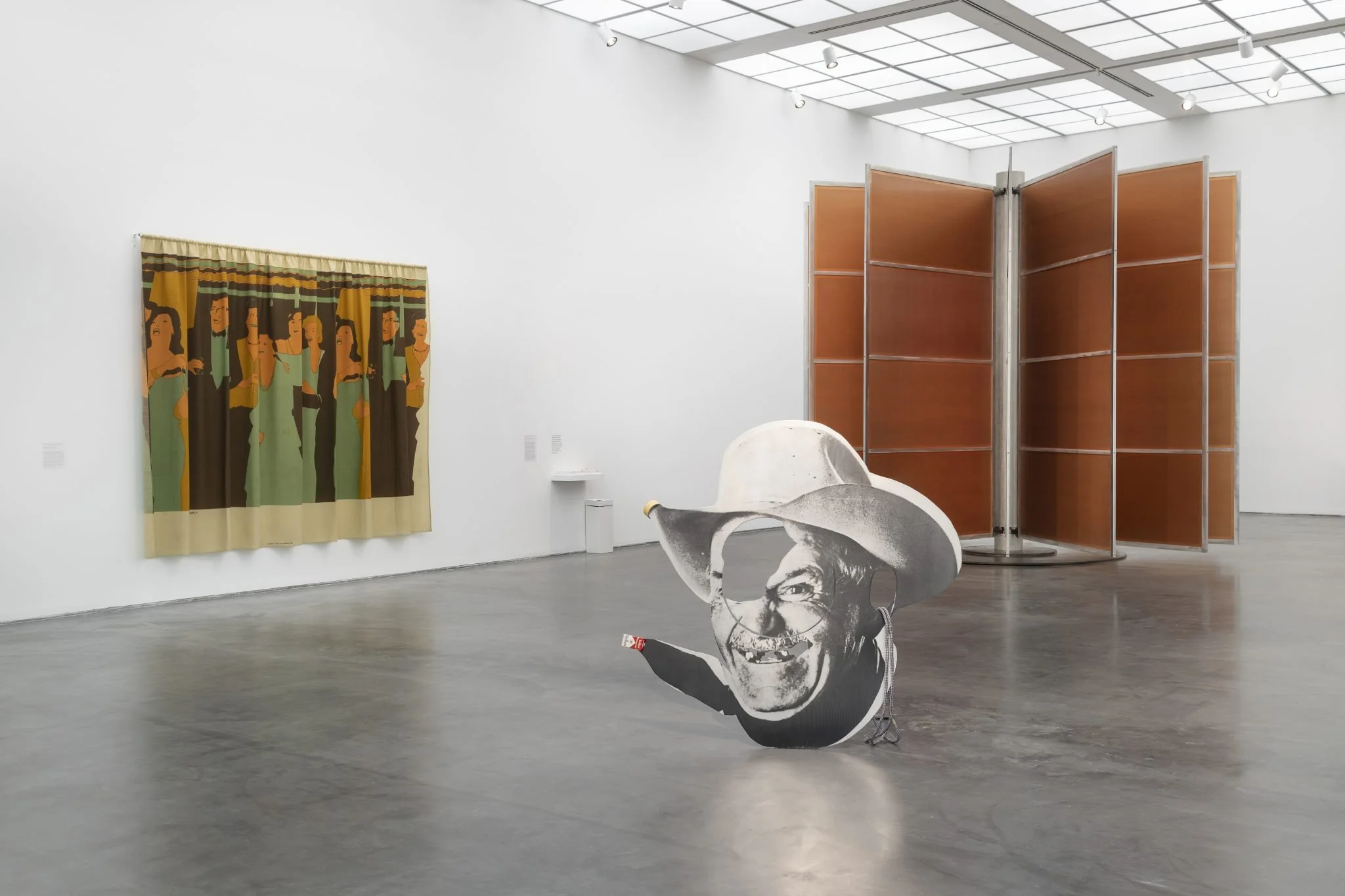Art New City : Reflections of Trauma: A Review of “Enter the Mirror” at the Museum of Contemporary Art (by S. Nicole Lane)
Each piece in “Enter the Mirror” at the Museum of Contemporary Art Chicago reflects on a trauma, an injustice, an unfortunate demise or a loss of life. The artworks in the show range from the 1970s to the mid-2010s, and include installation, video, sculpture, film, photography and painting. The truth of the works in the exhibition is difficult to face—it’s an entire room full of mourning.
Many works in the exhibition are drawn from the MCA’s collection and focus on the reality of our society and how we are all complicit, and even derive a form of pleasure when viewing certain horrors. This “visual pleasure,” is a theory coined by filmmaker Laura Mulvey, who wrote about the male gaze in film in her 1973 paper, “Visual Pleasure and Narrative Cinema.”
When entering the gallery, Cody Noland’s “Chainsaw Cut Cowboy Head” (1990), greets the visitor with the hungry grin of the Marlboro Man, the cowboy long perceived as a symbol for slavery, manifest destiny and Indigenous displacement. His face resembles the racism and violence reflected through much of the exhibition—he’s still an advertisement for the abuse of power propelled by whiteness.
“Enter the Mirror,” is filled with literal noise. Adrian Piper’s 1988 video installation, “Cornered,” discusses race and racism with two opposing birth certificates detailing her father’s race. She says directly to the camera, “How will you feel about being certifiably white? Will you feel relieved? Or will you feel disappointed? Deprived of something special. Perhaps you’ll lie and tell people that you’re Black even though you’re not.”
On the other side of the gallery is “Partially Buried 1960s/70s Dystopia Revealed (Mick Jagger at Altamont) & Utopia Reflected (Wavy Gravy at Woodstock),” Sam Durant’s two mounds of dirt that have buried audio from Wavy Gravy’s welcome announcement at Woodstock and The Rolling Stone’s set at the Altamont Speedway Free Festival. In the center of the gallery is Shilpa Gupta’s “WEARECLOSERTHANYOUEVERIMAGINED” (2020), which is a motion flipboard used at airports in train stations. The changing text was written before and during the lockdown and displays anxiety and turmoil. The rapid sound of the flipping letters resemble this rampant despair.
Amongst the sound echoing throughout the gallery is a large steel- and copper-plated Chris Burden piece, “The Other Vietnam Memorial” (1991). On a dozen thirteen-foot copper plates, Burden etched the names of the three-million Vietnamese killed during the Vietnam War. In response to Maya Lin’s Vietnam War Memorial in Washington D.C., which only named the Americans who were killed, Burden’s piece confronts the other side and forces us to look into the mirror.
Glen Ligon’s piece “White #11” (1994), an oil painting with text from a 1988 essay, “White,” by Richard Dyer, has the text: “This property of whiteness, to be everything and nothing, is the source of its representational power.” These words and these artworks all address the very real abuse of power, constant racism, and threat of violence that occurs nationally and globally. While viewers come into the gallery, meditate and ponder what they see, they are forced to look at themselves and their response to these actions. How can we make a change in the world to end suffering? To end war. To end racism. To end bigotry.
But when exiting the gallery, we leave the mirror behind and are complicit again. Looking at injustice in the gallery, we directly face it but back on Chicago Avenue, we catch the bus and ride safely home. (S. Nicole Lane)
Article published on https://art.newcity.com

